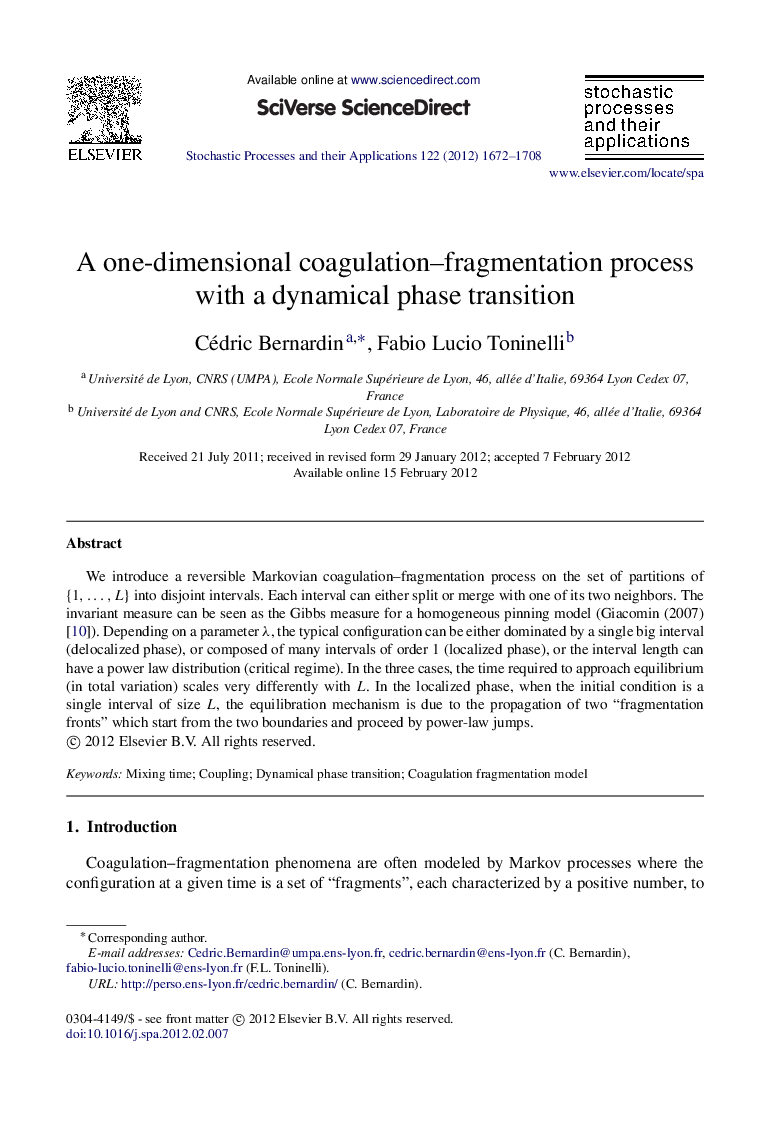| Article ID | Journal | Published Year | Pages | File Type |
|---|---|---|---|---|
| 10527283 | Stochastic Processes and their Applications | 2012 | 37 Pages |
Abstract
We introduce a reversible Markovian coagulation-fragmentation process on the set of partitions of {1,â¦,L} into disjoint intervals. Each interval can either split or merge with one of its two neighbors. The invariant measure can be seen as the Gibbs measure for a homogeneous pinning model (Giacomin (2007) [10]). Depending on a parameter λ, the typical configuration can be either dominated by a single big interval (delocalized phase), or composed of many intervals of order 1 (localized phase), or the interval length can have a power law distribution (critical regime). In the three cases, the time required to approach equilibrium (in total variation) scales very differently with L. In the localized phase, when the initial condition is a single interval of size L, the equilibration mechanism is due to the propagation of two “fragmentation fronts” which start from the two boundaries and proceed by power-law jumps.
Related Topics
Physical Sciences and Engineering
Mathematics
Mathematics (General)
Authors
Cédric Bernardin, Fabio Lucio Toninelli,
